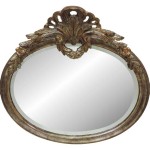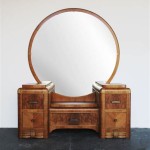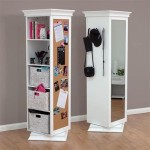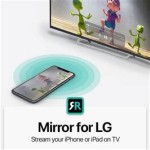Kid-Safe Wall Mirrors: A Guide to Choosing and Installing Safe Reflective Surfaces
Mirrors are captivating elements in any interior design scheme, adding depth, light, and a sense of spaciousness to a room. In spaces designed for children, mirrors can serve an even greater purpose, fostering self-awareness, encouraging imaginative play, and providing a stimulating sensory experience. However, the inherent fragility of traditional mirrors raises safety concerns, especially when children are involved. Kid-safe wall mirrors offer a solution, incorporating design modifications and material selections that prioritize the well-being of young users. This article explores the various aspects of kid-safe wall mirrors, providing comprehensive information on selection criteria, safety features, installation best practices, and maintenance considerations.
Understanding the Safety Concerns Associated with Traditional Mirrors
Traditional mirrors, typically constructed from glass coated with a reflective material, pose several potential hazards in environments frequented by children. The primary concern is breakage. Glass, when subjected to impact or stress, can shatter into sharp, irregular fragments capable of causing serious cuts, lacerations, and puncture wounds. The risk is amplified by the often unpredictable nature of children's activities, which may involve running, jumping, and throwing objects. The size and weight of large wall mirrors further exacerbate this risk, as falling or dislodged mirrors can inflict substantial blunt-force trauma.
Beyond the immediate risk of injury from broken glass, there is also a secondary concern regarding the potential for ingestion of small glass shards. Children, particularly toddlers, are prone to exploring their environment orally, and any loose fragments of glass present a choking hazard or can cause internal injuries if swallowed.
The metallic coating on the back of traditional mirrors also presents a minor hazard. While typically sealed, damage to the backing can expose the metallic layer, which may contain potentially harmful substances such as lead or mercury, albeit in very small quantities. Although the risk is low, limiting exposure to these materials is always prudent, especially in children's environments.
Key Features of Kid-Safe Wall Mirrors
Kid-safe wall mirrors mitigate the hazards associated with traditional mirrors through careful material selection, design modifications, and robust construction techniques. These features are designed to minimize the risk of breakage and reduce the severity of potential injuries in the event of damage.
Acrylic Mirrors: One of the most common approaches to creating kid-safe mirrors is the use of acrylic, also known as polymethyl methacrylate (PMMA). Acrylic is a thermoplastic polymer that offers several advantages over glass in terms of safety. It is significantly more impact-resistant than glass, meaning it can withstand considerable force without shattering. Even when acrylic does break, it tends to crack into larger, less sharp pieces, reducing the risk of serious cuts. Furthermore, acrylic is inherently lighter than glass, making it easier to handle and install while reducing the potential for injury if the mirror were to fall. However, acrylic is more susceptible to scratches than glass, so care must be taken during cleaning and maintenance.
Safety Film Backing: Regardless of the mirror material, applying a safety film to the back is a crucial safety feature. This film, typically a durable adhesive polymer, is designed to hold the mirror fragments together in the event of breakage. This prevents the glass or acrylic from scattering, minimizing the risk of cuts and lacerations. Safety film is an effective method for improving the safety of existing mirrors, as it can be retrofitted to most flat reflective surfaces, including glass.
Rounded Edges and Corners: Sharp edges and corners present a significant risk of injury, especially to young children who are prone to bumps and falls. Kid-safe mirrors typically feature rounded or beveled edges and corners to eliminate these sharp points. This design modification reduces the severity of potential injuries in case of accidental contact with the mirror.
Shatterproof Coatings: In addition to safety film, shatterproof coatings can be applied to the front surface of the mirror to further enhance its resistance to breakage. These coatings, typically made from durable polymers, act like a protective layer, absorbing impact and preventing the mirror from shattering into smaller, more dangerous fragments.
Framing and Mounting Systems: The method of framing and mounting a mirror significantly contributes to its overall safety. Mirrors should be securely mounted to the wall using appropriate hardware and installation techniques. Frames should be constructed from durable, non-toxic materials and designed to withstand the rigors of a child's environment. Recessed or flush-mounted mirrors can further reduce the risk of accidental impact and breakage.
Installation Best Practices for Kid-Safe Wall Mirrors
Even the safest mirror can become a hazard if improperly installed. Following best practices for installation is crucial to ensure the mirror remains securely attached to the wall and minimizes the risk of falling or being dislodged.
Wall Assessment: Before beginning the installation, assess the wall's structural integrity. The wall must be capable of supporting the weight of the mirror and its frame. For drywall or plaster walls, it is essential to locate wall studs and anchor the mirror to these studs using appropriate screws or bolts. Avoid relying solely on drywall anchors, as they may not provide sufficient support for heavier mirrors.
Hardware Selection: Choose mounting hardware specifically designed for the weight and type of mirror being installed. Use high-quality screws, bolts, and anchors made from durable materials such as steel or stainless steel. Ensure that the hardware is long enough to penetrate the wall studs adequately.
Professional Installation: For large or heavy mirrors, it is recommended to hire a professional installer. Professional installers have the expertise and equipment to correctly assess the wall's structural integrity, select the appropriate mounting hardware, and securely attach the mirror to the wall. Professional installation can provide peace of mind and ensure the mirror is installed safely and securely.
Proper Placement: Consider the mirror's placement carefully, keeping in mind the height and reach of children using the space. Avoid placing mirrors in areas where they are likely to be accidentally bumped or knocked over, such as near doorways or in high-traffic areas. Ensure that the mirror is mounted at a height that allows children to see themselves comfortably without having to strain or stretch.
Secure Mounting: When mounting the mirror, ensure that all screws and bolts are tightened securely. Use a level to ensure the mirror is hung straight. Periodically inspect the mounting hardware to ensure it remains tight and secure. If any screws or bolts become loose, tighten them immediately.
Adhesive Mounting: While adhesive mounting options exist, they are generally not recommended for heavier mirrors or in areas where children are present. Adhesive mounting may not provide sufficient long-term support, and the mirror could potentially detach from the wall over time. If adhesive mounting is used, select a high-quality adhesive specifically designed for mirrors and follow the manufacturer's instructions carefully.
Maintenance and Care of Kid-Safe Wall Mirrors
Regular maintenance and proper care are essential for preserving the appearance and prolonging the lifespan of kid-safe wall mirrors. Furthermore, appropriate cleaning practices contribute to the overall safety of the environment.
Cleaning Materials: Avoid using abrasive cleaners or harsh chemicals on mirror surfaces, as they can scratch or damage the reflective coating. Use a soft, lint-free cloth and a mild cleaning solution specifically designed for mirrors or glass. A solution of water and white vinegar can also be used to clean mirrors effectively.
Cleaning Technique: Spray the cleaning solution onto the cloth, not directly onto the mirror surface. Wipe the mirror in a circular motion, then buff dry with a clean, dry cloth to prevent streaks. Avoid applying excessive pressure, as this can scratch the mirror surface.
Scratch Prevention: Acrylic mirrors are more susceptible to scratches than glass mirrors. To prevent scratches, avoid using abrasive cleaners or cloths. Use a soft, lint-free cloth and a solution specifically designed for cleaning acrylic surfaces. Consider applying a scratch-resistant coating to the mirror surface to protect it from damage.
Regular Inspections: Periodically inspect the mirror for any signs of damage, such as cracks, chips, or loose mounting hardware. Address any issues promptly to prevent further damage or potential safety hazards. Replace damaged mirrors immediately to minimize the risk of injury.
Childproofing Considerations: Teach children about the importance of handling mirrors with care and avoiding actions that could potentially damage them. Consider installing corner guards or edge protectors to further reduce the risk of injury in case of accidental contact with the mirror.
By adhering to these guidelines for selection, installation, and maintenance, it is possible to incorporate mirrors safely and effectively into environments designed for children, enhancing their sensory experiences and promoting self-discovery in a secure and stimulating setting. The conscious choice of kid-safe alternatives transforms mirrors from potential hazards into valuable tools for learning and development.

Safety Wall Mirrors At Lakeshore Learning

Child Safe Mirrors Arte Viva Impact Resistant Mirror

Child Safe Mirrors Me And My Glass

4pcs Shatterproof Wall Mirror Bedroom Gym Mirrors Home Workout Safe For Kids
Wall Mirror Full Length For Bedroom Shatterproof Kid

Kids Mirrors Plastic Child Safe Sheets Direct

Child Safe Mirrors Kids Shatterproof Mirror Cut My

Large Wall Mirror Mirrors Tts

Child Safe Mirrors Arte Viva Impact Resistant Mirror

Quegau Kids Safety Shatterproof Mirror For Wall Plastic Mounted Made Of Unbreakable Acrylic Non Glass Thick 1 8 1pcs X8 Great Bedroom Door Closet Rooms Yahoo Ping








